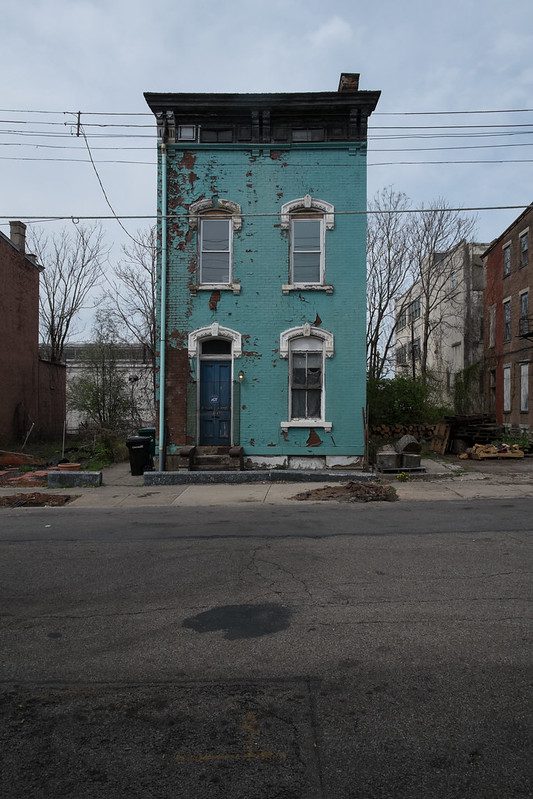Between Eminence & Notoriety: Four Decades of Radical Urban Planning, by Chester Hartman, Center for Urban Policy Research, 2002. 405 pp. $29.95 (Paperback), $39.95 (Cloth).
In her foreword to Chester Hartman’s newest book, Jane Jacobs acknowledges the pivotal role the author played in challenging the sweeping claims of those who supported the Federal Urban Renewal Program in the 1950s and 1960s. She describes the critical contribution Hartman has made to developing innovative affordable housing and urban revitalization policies that effectively address the income and housing security needs of our poorest citizens. Finally, she credits the author for his persistent efforts to encourage graduate planning and design schools to undertake advocacy planning projects designed to promote greater social and racial equality. Jacobs concludes by saying, “Yes, I want to put in my say that your book is needed, especially by people too young to have lived through the kind of events it chronicles.”
While I agree with her assessment of the historical importance of Hartman’s book, I believe its greatest relevance is for those seeking meaningful alternatives to our nation’s current housing policies that, in many cases, reflect the misplaced assumptions, questionable models, and failed policies he so clearly analyzes in this volume.
In the autobiographical essay that opens the book, Hartman describes his growing interest in urban affairs, civil rights, and social justice, from his early years in the Bronx through his undergraduate studies in Germanic Languages and Literature at Harvard, graduate studies at the Harvard School of Design, and Ph.D. studies with Martin Meyerson. This work culminated in his participation in a pioneering study that examined the impact on residents of the destruction of Boston’s West End neighborhood—a once-vibrant ethnic community—under the federal Urban Renewal Program. The second part of the essay covers Hartman’s subsequent efforts to involve Harvard students in applied research projects focused on the economic and community development needs of Boston’s poorest neighborhoods. Hartman describes how he established the Harvard Urban Field Study Program to provide students with the opportunity to support the participatory planning efforts of grassroots organizations and how these activities, along with his active support of the Harvard strike, led to his departure from Harvard.
In the more than 30 articles that make up the remainder of the book, Hartman covers a range of public policy issues related to our nation’s ongoing effort to promote greater economic and social equality through enlightened housing, employment, welfare, and redevelopment policies. The book is organized into five sections: Displacement and Urban Renewal, Housing Problems and Policies, Organizing and Activism, Poverty and Race, and Planning Education. Although the articles concern historic debates regarding the direction of federal housing policy, many have relevancy for today. For example, “Displacement: A Not So New Problem,” addresses the often-ignored psychological and social impacts of large-scale housing demolition. While this article first appeared in 1978 in response to the massive clearance activities of the Urban Renewal Administration, it again has relevance as the U.S. Department of Housing and Urban Development continues to demolish many high-density public housing projects under its Hope VI Program.
In “Housing Policies under the Reagan Administration,” Hartman discusses the limitations of HUD’s Experimental Housing Allowance Program, raising questions about the federal government’s growing embrace of the Section 8 voucher program. Finally, in “Homeownership: Who’s Got to Have It?” Hartman challenges the appropriateness of homeownership as a driving value in public housing policy and asks whether the social status and shelter security benefits of homeownership might be achieved through alternative means. This too is an extremely timely policy discussion as HUD, Fannie Mae, and numerous other housing funders pursue policies designed to encourage greater homeownership among poor and working-class families despite faltering property values and rising mortgage default rates in many low-income urban areas.
Hartman’s book is important because it offers a critical perspective on important housing policy issues that will impact the quality of life experienced by millions of poor and working-class Americans. The book is also valuable because it describes the work of a thoughtful public intellectual who, like Lewis Mumford and Jane Jacobs, pursued scholarship that raised fundamental questions about the impact of federal urban policy on social justice. Between Eminence & Notoriety illustrates how a single individual, working with committed colleagues, can create organizations that take effective action to address the increasing social and racial inequality that characterizes American society. It should inspire others to join the movement to transform contemporary planning from what is too often a bureaucratic function that frequently supports uncontrolled sprawl, destroys the natural environment, strains public resources, and promotes residential segregation into a powerful social movement, committed to building a more just and equitable urban society.



Comments